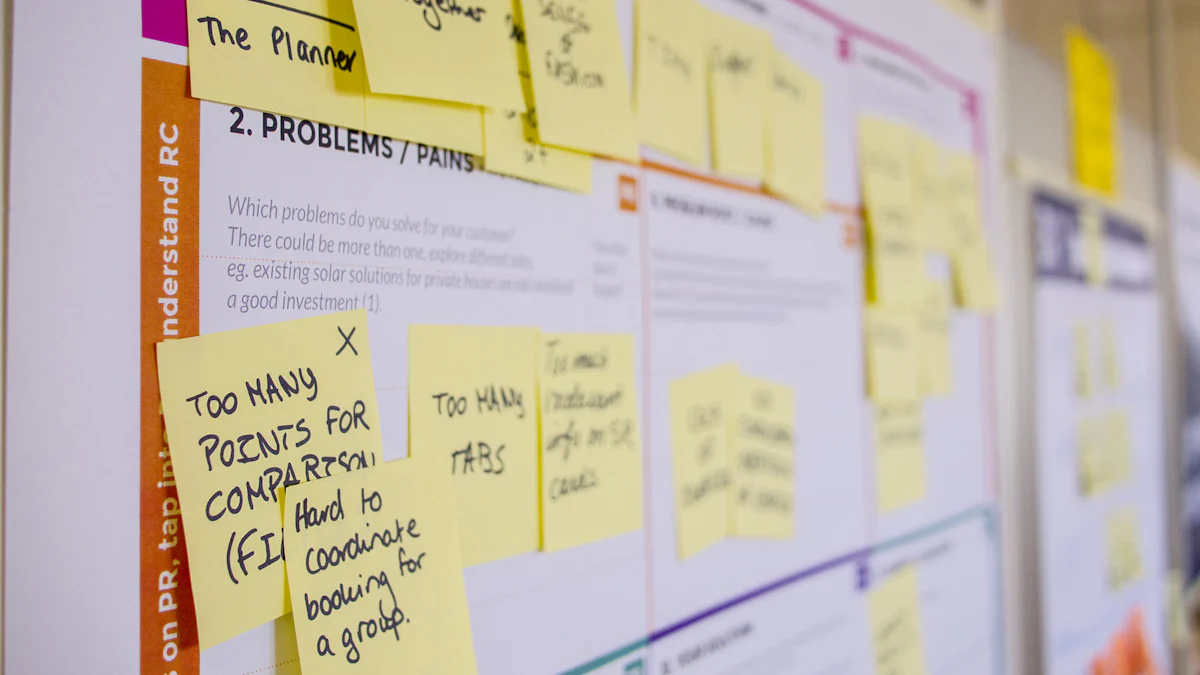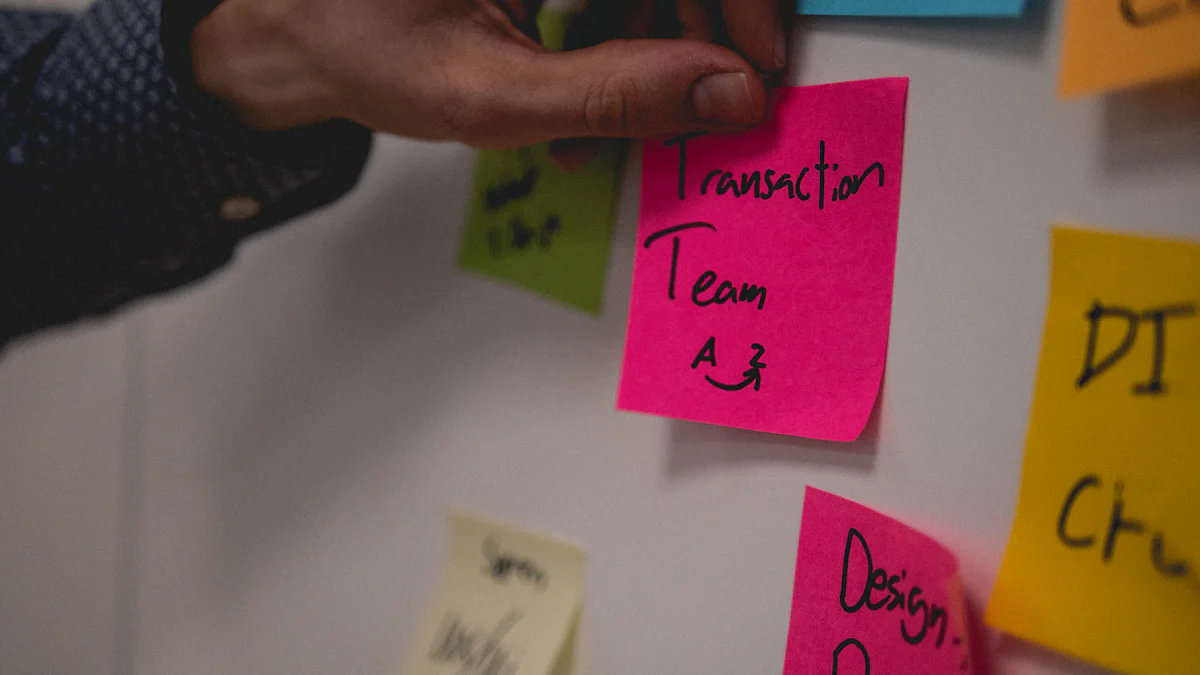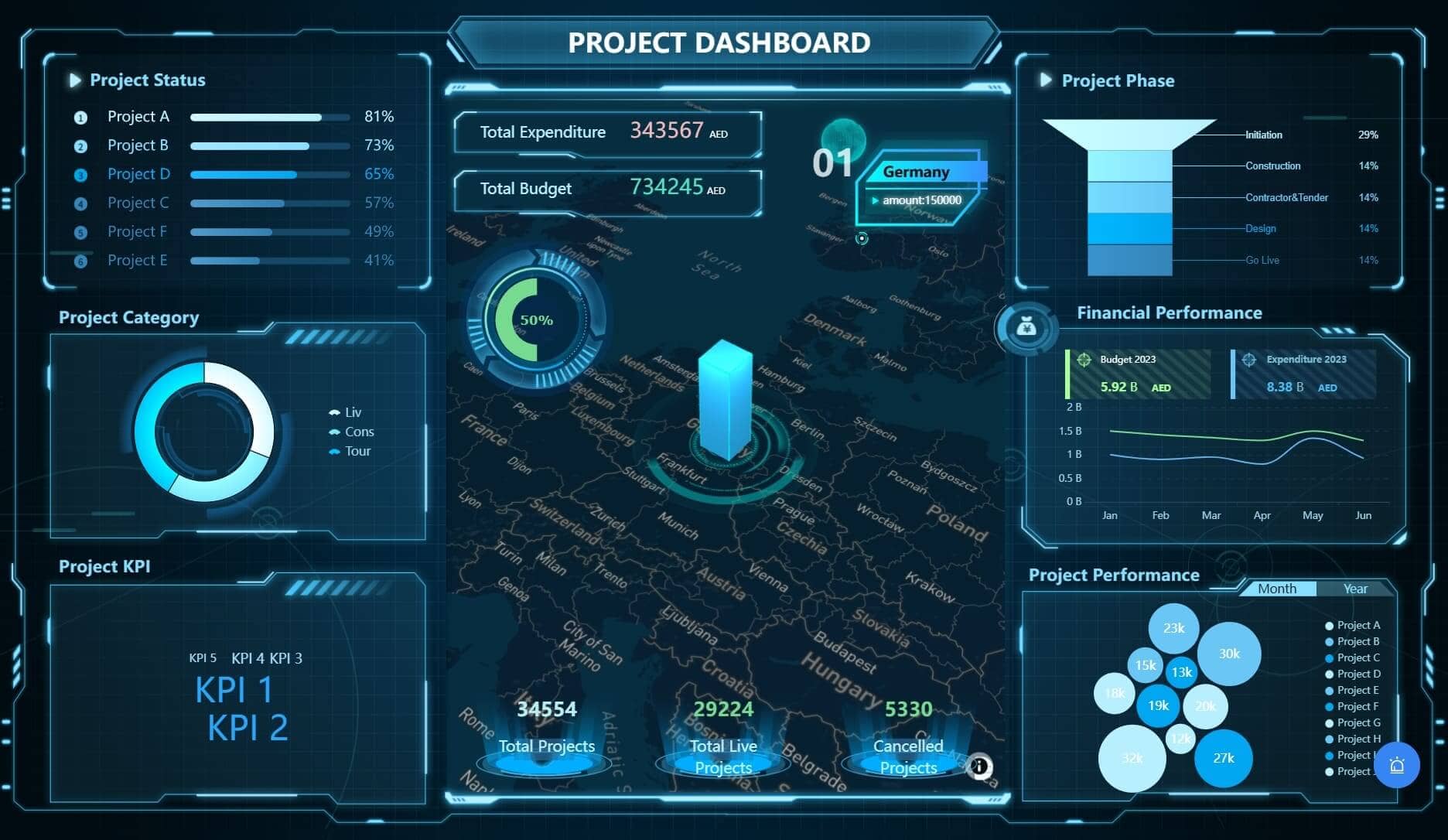

Project management methodologies play a crucial role in enhancing organizational efficiency. Companies seek effective strategies to optimize processes and deliver value. Lean vs Agile methodologies stand out in this pursuit. Lean focuses on minimizing waste and maximizing value, while Agile emphasizes adaptability and responsiveness. Organizations increasingly adopt these methodologies. For instance, 91% of organizations prioritize Agile adoption. Lean techniques have also shown significant benefits, with companies reporting a 25% increase in productivity. Understanding these methodologies can help you choose the right approach for your projects.
Lean vs Agile: Understanding Lean Methodology
Definition and Core Principles
Lean methodology centers on efficiency. The approach originated from the Toyota Production System in the 1940s-1970s. Lean aims to eliminate waste, enhance efficiency, and maximize value. Lean principles have roots in manufacturing practices developed by Henry Ford and refined by Toyota after World War II.
Minimizing Waste
Lean methodology focuses on waste reduction. Waste includes any process or activity that does not add value. Lean identifies seven types of waste: overproduction, waiting, transport, extra processing, inventory, motion, and defects. Lean practitioners strive to minimize these wastes to improve efficiency.
Maximizing Value
Lean methodology emphasizes value maximization. Value refers to any activity that directly benefits the customer. Lean encourages organizations to identify and enhance value-adding activities. This focus ensures that processes align with customer needs and expectations.
Key Practices in Lean
Lean methodology incorporates several key practices. These practices aim to streamline operations and improve outcomes.
Continuous Improvement
Continuous improvement, or Kaizen, is a fundamental Lean practice. Organizations regularly assess processes to identify areas for enhancement. Small, incremental changes lead to significant improvements over time. Employees at all levels contribute to continuous improvement efforts.
Just-In-Time Production
Just-In-Time (JIT) production is another essential Lean practice. JIT aims to produce only what is needed, when it is needed. This approach reduces inventory costs and minimizes waste. JIT enhances flexibility and responsiveness in production processes.
Lean vs Agile: Understanding Agile Methodology
Definition and Core Principles
Agile methodology focuses on flexibility and adaptability. Agile teams embrace change and adjust plans as needed. This approach allows teams to respond quickly to customer feedback and market shifts. Neil Killick, an expert in Agile Software Development, highlights the importance of collaboration. Agile teams work closely with customers to deliver valuable software. Teams maintain a sustainable pace and continuously improve their processes.
Flexibility and Adaptability
Agile methodology thrives on flexibility. Teams work in short cycles called sprints. Each sprint results in a potentially deliverable product increment. This iterative process ensures that teams can adapt to changes. Continuous feedback helps teams address issues promptly. Agile teams remain responsive to evolving customer needs.
Customer Collaboration
Customer collaboration is a cornerstone of Agile. Teams prioritize interactions over processes. Agile values customer input throughout the development process. This collaboration ensures that the final product aligns with customer expectations. Agile teams focus on delivering value through close partnerships with customers.
Key Practices in Agile
Agile methodology incorporates several key practices. These practices enhance team effectiveness and product quality.
Iterative Development
Iterative development is central to Agile. Teams divide work into small, manageable units. Each unit undergoes development, testing, and review within a sprint. This approach allows teams to make incremental improvements. Iterative development reduces risk and enhances product quality.
Cross-Functional Teams
Cross-functional teams drive Agile success. Teams consist of members with diverse skills and expertise. Collaboration among team members fosters innovation. Cross-functional teams ensure that all aspects of a project receive attention. This approach enhances problem-solving and decision-making.
Lean vs Agile: A Comparative Analysis

Similarities
Focus on Efficiency
Both Lean vs Agile methodologies prioritize efficiency. Lean aims to eliminate waste in processes. Agile seeks to deliver value rapidly. Each methodology enhances productivity. Lean uses techniques like Just-In-Time production. Agile employs iterative development. Both approaches streamline workflows.
Emphasis on Team Collaboration
Lean vs Agile methodologies emphasize team collaboration. Lean encourages teamwork through continuous improvement. Agile fosters collaboration with cross-functional teams. Both methods rely on effective communication. Teams work together to achieve common goals. Collaboration ensures successful project outcomes.
Differences
Approach to Change
Lean vs Agile differ in their approach to change. Lean focuses on optimizing existing processes. Agile embraces change and adapts quickly. Lean aims for stability in operations. Agile thrives in dynamic environments. Each methodology suits different project needs.
Project Scope and Planning
Lean vs Agile have distinct project scope and planning strategies. Lean emphasizes detailed planning and process optimization. Agile prioritizes flexibility and customer feedback. Lean suits projects with stable requirements. Agile fits projects with evolving demands. Each methodology offers unique advantages.
Lean vs Agile: Choosing the Right Methodology

Criteria for Decision-Making
Project Size and Complexity
Project size and complexity play a crucial role in selecting between Lean vs Agile methodologies. Lean suits projects with stable requirements and predictable outcomes. Large-scale manufacturing projects often benefit from Lean's structured approach. Lean focuses on waste reduction and efficiency. Agile, however, excels in projects with high uncertainty and frequent changes. Software development projects often require Agile's flexibility and adaptability. Agile teams can quickly respond to evolving customer needs.
Industry and Market Conditions
Industry and market conditions influence the choice between Lean vs Agile. Lean thrives in industries with routine and repeatable processes. Manufacturing and logistics sectors often adopt Lean principles. Lean emphasizes efficiency and waste reduction. Agile suits dynamic industries with rapid technological advancements. The software and IT sectors frequently utilize Agile methodologies. Agile enables quick adaptation to market shifts and customer feedback.
Case Studies and Examples
Successful Lean Implementations
Air France Uses Lean Agile Procurement illustrates Lean's impact in procurement. Air France implemented Lean principles to streamline operations. The airline achieved significant cost reductions and improved efficiency. Lean Agile Procurement transformed Air France's supply chain management. The approach minimized waste and maximized value. Air France's success demonstrates Lean's effectiveness in complex industries.
Successful Agile Implementations
Six Case Studies Illustrating Agile Procurement Impact highlight Agile's transformative power. Diverse industries experienced positive outcomes with Agile procurement. Agile methodologies enhanced collaboration and responsiveness. Companies reported increased customer satisfaction and faster delivery times. Agile's iterative approach enabled continuous improvement. These case studies underscore Agile's adaptability and effectiveness in various sectors.
Lean vs Agile: Practical Advice for Implementation
Best Practices for Lean
Training and Development
Training and development play a crucial role in implementing Lean methodology. Organizations must invest in educating employees about Lean principles. Training programs should focus on waste reduction and process efficiency. Employees need to understand how Lean practices enhance productivity. Continuous learning ensures that teams stay updated with Lean advancements. Companies can use Lean Project Management Software with Jira to facilitate training. This software streamlines workflows and optimizes processes. Collaboration tools within the software promote team learning. Automation features help employees focus on value-adding tasks.
Process Mapping
Process mapping is essential for successful Lean implementation. Organizations should create detailed maps of current processes. These maps identify areas of waste and inefficiency. Teams can then develop strategies to eliminate waste. Process mapping helps visualize workflows and pinpoint bottlenecks. Lean practitioners use process maps to track improvements over time. Regular updates to process maps ensure ongoing optimization. Jira offers tools for process mapping and workflow customization. These tools support Lean initiatives by providing clear visualizations. Teams can collaborate effectively using Jira's interactive features.
Best Practices for Agile
Agile Tools and Software
Agile tools and software are vital for effective Agile implementation. Teams need reliable platforms to manage Agile projects. Jira Agile Software offers comprehensive project management features. Scrum boards and Kanban boards help teams organize tasks. Interactive timelines provide insights into project progress. Customizable workflows adapt to specific Agile needs. Over 3000 apps and integrations enhance Jira's functionality. Agile teams benefit from seamless collaboration and communication. Easy Agile Jira Plugins further align teams with product goals. These plugins simplify Agile processes and improve team efficiency.

Project dashboard created by FineBI
Agile Coaching and Mentoring
Agile coaching and mentoring are key components of Agile success. Coaches guide teams in adopting Agile principles and practices. Mentoring fosters a culture of continuous improvement and learning. Agile coaches help teams navigate challenges and embrace change. Regular feedback sessions enhance team performance and adaptability. Mentors encourage open communication and collaboration among team members. Agile coaching ensures that teams remain focused on delivering value. Organizations should invest in skilled Agile coaches to support teams. Effective coaching leads to successful Agile implementations and outcomes.
Lean and Agile methodologies offer distinct advantages. Lean focuses on waste reduction and efficiency. Agile emphasizes adaptability and customer collaboration. Understanding project needs helps in choosing the right approach. Aligning methodologies with organizational goals enhances success. Hybrid approaches combine strengths of both methodologies. Tailoring strategies to unique needs improves outcomes. Implementing Lean principles optimizes processes. Agile practices enhance responsiveness. The right project management software supports chosen methodologies. Effective implementation drives value and efficiency. Adapt methodologies to specific project requirements for optimal results.
FAQ
Lean methodology focuses on reducing waste and enhancing efficiency. Agile methodology emphasizes adaptability and responsiveness to change. Both methodologies aim to improve processes and deliver value.
Lean uses structured processes to minimize waste. Agile employs iterative cycles to adapt quickly to changes. Lean suits stable environments with repeatable tasks. Agile fits dynamic settings with evolving requirements.
Many organizations successfully integrate Lean vs Agile methodologies. Combining both approaches can enhance efficiency and flexibility. Lean principles help streamline Agile processes. Agile practices add adaptability to Lean operations.
Manufacturing and logistics sectors often adopt Lean due to routine processes. Software development and IT industries frequently use Agile for flexibility. Each industry can tailor Lean vs Agile to specific needs.
Lean encourages teamwork through continuous improvement. Agile fosters collaboration with cross-functional teams. Both methodologies rely on effective communication. Teams work together to achieve common goals and improve outcomes.
Lean vs Agile methodologies offer several benefits. Lean increases efficiency and reduces costs. Agile enhances adaptability and customer satisfaction. Both approaches drive value and improve organizational performance.
Lean emphasizes detailed planning and process optimization. Agile prioritizes flexibility and customer feedback. Lean suits projects with stable requirements. Agile fits projects with evolving demands.
Continuous improvement is central to both Lean vs Agile methodologies. Lean uses exacting inspection processes for constant enhancement. Agile employs feedback loops to refine methods and results.
Continue Reading About Lean vs Agile
2025 Best Data Integration Solutions and Selection Guide
Explore top data integration solutions for 2025, enhancing data management and operational efficiency with leading platforms like Fivetran and Talend.
Howard
Dec 19, 2024
2025's Best Data Validation Tools: Top 7 Picks
Explore the top 7 data validation tools of 2025, featuring key features, benefits, user experiences, and pricing to ensure accurate and reliable data.
Howard
Aug 09, 2024
Covers Dashboard: Find Your Perfect Match
Choose the perfect covers dashboard to protect and style your car, enhancing its interior and resale value with the right material and fit.
Lewis
Nov 05, 2024
Best Data Management Tools of 2025
Explore the best data management tools of 2025, including FineDataLink, Talend, and Snowflake. Learn about their features, pros, cons, and ideal use cases.
Howard
Aug 04, 2024
Dynamic Dashboard: A Game Changer for Data Analysis
Dynamic dashboard revolutionize data analysis with real-time insights, customization, and improved decision-making. Explore their impact and future trends.
Lewis
Oct 11, 2024
Draft Dashboard Review - Is It the Ultimate DFS Tool?
Review the Draft Dashboard, a top DFS tool with real-time data, predictive analytics, and lineup optimization. Compare features and pricing with competitors.
Lewis
Oct 21, 2024



